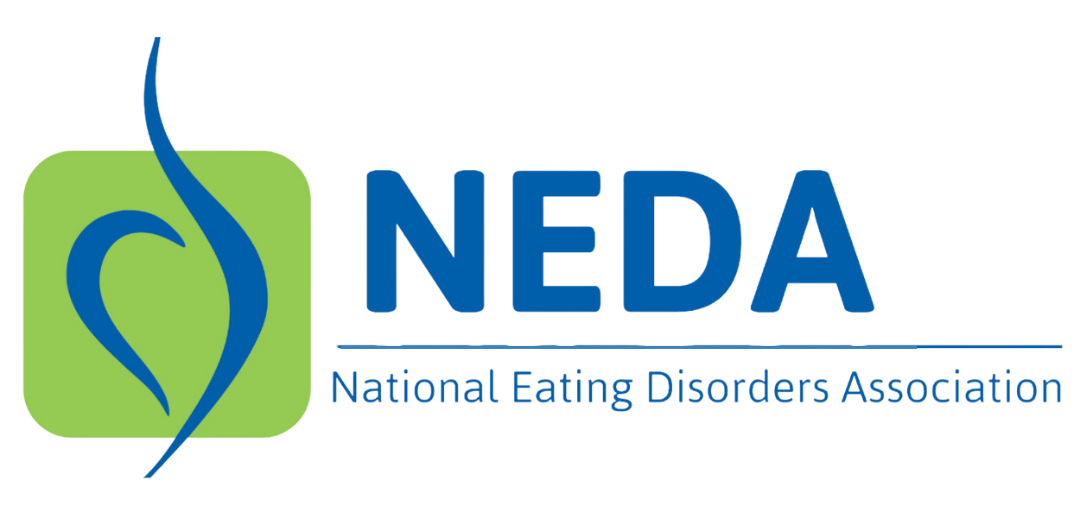Involuntary Commitment
By Wayne Bowers, PhD, ABPP, FAED
How to Help a Loved One Who Refuses Treatment?
Helping a friend or family member who is suffering with an eating disorder can be highly emotional and painful and can present some very difficult challenges, especially when your loved one refuses treatment or denies that there is a problem. For some people, the reality of their eating disorders is not obvious. For others, what to do about it may not be obvious or they may feel torn between recovery and the overwhelming fear of letting go of the eating disorder. This can be hard to understand for friends and family. Helping a loved one who does not recognize the problem or refuses to address it is possible. You will find more information below about civil commitment or involuntary commitment, but first it is important to start by just talking with your loved one in a direct and caring way. Please take a moment to read our tips for talking to loved ones who may have an eating disorder.
We know that this is a very difficult time for you and your loved one. It can be hard to know what to do. It is important to continually let your loved one know that you believe in them and want to see them happy and healthy.
In fact, although the effects of your words may seem to be unsubstantial now, people who have recovered say that it was an essential part of their recovery process. You can continue to encourage them to get professional help, but know that it will ultimately have to be their decision. That can be the difficult part.
What is Civil Commitment?
Civil commitment, more commonly known as involuntary commitment, is a legal process by which someone with symptoms of a serious mental disorder is involuntarily committed to a psychiatric hospital for treatment.1 Many people are not familiar with this complex legal process and there are many misconceptions about what it is and how it works. Below we’ll try to help you navigate this topic and explain when involuntary commitment is appropriate, what the legal process involves, factors to consider when deciding whether to initiate the process and the steps you can take.
Involuntary Commitment and Eating Disorders
Eating disorders can lead to serious mental and physical health consequences that can be fatal. Untreated, these disorders can also become chronic conditions that interfere with a person’s ability to function in all areas of life (e.g., social, psychological, academic, and occupational).
People with eating disorders often deny or are unable to understand the nature or seriousness of their disorder. This can lead some with eating disorders to refuse treatment even when it threatens their well-being and life.
It can be confusing and difficult to decide whether it is time to seek involuntary commitment for a loved one who has an eating disorder. However, when someone with a severe and life threatening eating disorder is in denial about the seriousness of their illness and refuses treatment, involuntary commitment may be the only way ensure they receive the treatment they need.2,3
When is Involuntary Commitment Appropriate?
In the United States, all fifty states have laws on involuntary commitment for individuals with serious mental health disorders. However, the laws and criteria that determine when commitment is appropriate vary state to state. While the laws vary, most states include the following criteria for involuntary commitment:1,4
- That an individual is an immediate physical danger to themselves or others.
- That a person, due to a mental disorder or “grave disability,” is in danger of serious physical harm because of a failure to provide for their essential human needs such as food, clothing, or shelter.
- That a person is experiencing a mental health crisis and is unable to understand their “need for treatment.” This means they are unable to:
- Provide needed psychiatric care for themselves.
- Make an informed medical decision.
- Seek necessary intervention to prevent further psychiatric or emotional deterioration.
What is the Process for Involuntary Commitment?
While the process and criteria for involuntary commitment varies state to state, there are some steps that are generally followed throughout the country:1
- A concerned individual contacts the appropriate person or entity in their state (such as law enforcement, a court official, or mental health provider) to ask that they initiate the process for involuntary commitment. Who is allowed to initiate a petition for involuntary commitment varies state to state and typically can include a family member, mental health provider, police officer, or court official. It can be helpful to contact a local expert about this process such as the hospital in your area, the police department, a state agency or advocacy organization.
- The person will be taken into custody and evaluated by a mental health provider to determine whether it is appropriate to commit them to treatment involuntarily. In some states a court must first approve the petition for commitment prior to being taken into custody whereas other states allow police officers to serve as the petitioner and take the person to a facility to be evaluated without court approval.
- If the evaluator decides the individual meets the criteria for involuntary commitment then they will be admitted to a facility. The time period between when someone is evaluated and when they must be admitted to a facility varies in different states.
- Once evaluated, the person will have a hearing where a judge using expert testimony from mental health professionals will determine if the person should continue to receive involuntary commitment for a longer period of time. States have different laws about how long someone can be admitted involuntarily before receiving a hearing. Additionally, some states only require a hearing if it is requested by the individual being committed.
Note: In many states, once the order for the involuntary commitment is given, there is a second stage to the process in which authority to involuntarily administer medications and nourishment is granted either by a court or administrative panel.
Challenges to Involuntary Commitment
Involuntary commitment can be challenging to obtain for individuals with eating disorders since the illness does not obviously affect their ability to accurately perceive reality beyond their eating disorder symptoms.5 Secondly, those who are not knowledgeable about eating disorders (e.g., court officials, evaluators) often fail to recognize that eating disorders like anorexia nervosa can be an imminent threat to someone’s life.
It can also be difficult to obtain involuntary commitment, since individuals with severe eating disorders usually present themselves well, are intelligent and articulate, typically provide a rational explanation for their behavior and do not express an intent to die.5 Furthermore, it can be challenging for legal and medical professionals without knowledge about eating disorders to distinguish an eating disorder from weight concerns normalized in our culture given how thinness is idealized in the media and society at large.6 Despite the challenges of involuntarily committing someone with an eating disorder, it is important to remember that such treatment is a temporary loss of autonomy that can ultimately be life-saving.7,8
Patient Perspectives
As a loved one it can be helpful to understand the patient’s perspective about involuntary commitment. Below are some things to keep in mind as you consider taking the step of pursuing the involuntary commitment of someone you care about:
- Despite experiencing a temporary loss of autonomy, in hindsight, some patients were thankful and saw involuntary commitment as justified, especially when commitment is necessary to maintain life and prevent serious medical problems or death.9,10
- Although some patients saw involuntary commitment as a factor to continue engagement in treatment, other patients felt involuntary commitment should be reserved only in situations that were considered life threatening.11,13
- People who have experienced involuntary commitment report what is most important is how they were treated during and after being committed.11,12,13
- Having a positive and supportive relationship with family, significant others, and professionals are critical in determining how a patient perceives the experience of involuntary commitment and is more important than the temporary loss of decision making.
- The timing of involuntary commitment is also important. If someone is involuntarily admitted to treatment when they are contemplating the need for change and recovery, it may in fact prove harmful for the patient’s engagement in treatment.14
Conclusion
To summarize involuntary commitment in the treatment of eating disorders, while complicated in nature, is worth considering in individuals with severe and life-threatening eating disorders who refuse treatment. There are pros and cons about the use of this form of involuntary commitment. While civil commitment may negatively impact relationships with treatment providers and loved ones and the individual may not view this intervention as necessary, it may be life saving.
Resources
- If you are interested in taking legal action to involuntarily commit a loved one it is best to contact a local attorney’s office or seek out the agency in your state that handles involuntary commitment. The following resource may be helpful in learning more about the involuntary commitment laws in your state and the state agencies and attorneys that handle these cases:
- If you or your loved one is in immediate danger, call 911.
- For mental health crisis situations, call or text the Suicide and Crisis Lifeline: 988 [Spanish speaking services and for Deaf & Hard of Hearing] or text Crisis Text Line: “HOME” to 741-741. [Spanish speaking services]
Sources
[1] Substance Abuse and Mental Health Services Association (SAMHSA). (2019). Civil commitment and the Mental Health Care Continuum. https://www.samhsa.gov/sites/default/files/civil-commitment-continuum-of-care.pdf
[2] Westmoreland, P., Johnson, C., Stafford, M., Martinez, R., & Mehler, P. S. (2017). Involuntary Treatment of Patients With Life-Threatening Anorexia Nervosa. The journal of the American Academy of Psychiatry and the Law, 45(4), 419–425. https://pubmed.ncbi.nlm.nih.gov/29282231/
[3] Crone, C., Anzia, D. J., Fochtmann, L. J., & Dahl, D. (2023). The American Psychiatric Association practice guideline for the treatment of patients with eating disorders, 4th edition. American Psychiatric Association. Available at: https://psychiatryonline.org/doi/book/10.1176/appi.books.9780890424865
[4] Treatment Advocacy Center. (2014). State standards for assisted treatment: Civil commitment criteria for inpatient and outpatient psychiatric treatment. https://nhchc.org/wp-content/uploads/2019/08/state-standards-for-treatment.pdf
[5] Testa, M., & West, S. G. (2010). Civil commitment in the United States. Psychiatry (Edgmont), 7(10), 30–40. https://www.ncbi.nlm.nih.gov/pmc/articles/PMC3392176/
[6] Gutheil, T.G. (1986). The right to refuse treatment: Paradox, pendulum and the quality of care. Behavioral Sciences & the Law, 4(3), 265-277. https://doi.org/10.1002/bsl.2370040303
[7] Andersen A. E. (2007). Eating disorders and coercion. The American journal of psychiatry, 164(1), 9–11. https://doi.org/10.1176/ajp.2007.164.1.9
[8] Bowers, W.A. (2014). Civil Commitment in the Treatment of Eating Disorders and Substance Abuse: Empirical Status and Ethical Considerations. In: Brewerton, T., Baker Dennis, A. (eds) Eating Disorders, Addictions and Substance Use Disorders. Springer, Berlin, Heidelberg. https://doi.org/10.1007/978-3-642-45378-6_30
[9] Guarda, A.S., Pinto, A.M., Coughlin, J. W., Hussain, S., Haug, N.A., & Heinberg, L.J. (2007). Perceived coercion and change in perceived need for admission in patients hospitalized for eating disorders. American Journal of Psychiatry, 164(1), 108-114. https://doi.org/10.1176/ajp.2007.164.1.108
[10] Watson, T. L., Bowers, W. A., & Andersen, A. E. (2000). Involuntary treatment of eating disorders. The American journal of psychiatry, 157(11), 1806–1810. https://doi.org/10.1176/appi.ajp.157.11.1806
[11] Tan, J. O. A., Hope, T., Stewart, A., & Fitzpatrick, R. (2003). Control and compulsory treatment in anorexia nervosa: The views of patients and parents. International Journal of Law and Psychiatry, 26(6), 627–645. https://doi.org/10.1016/j.ijlp.2003.09.009
[12] Tan, D. J., Hope, P. T., Stewart, D. A., & Fitzpatrick, P. R. (2006). Competence to make treatment decisions in anorexia nervosa: thinking processes and values. Philosophy, psychiatry, & psychology: PPP, 13(4), 267–282. https://doi.org/10.1353/ppp.2007.0032
[13] Elzakkers, I.F.F.M., Danner, U.N., Hoek, H.W., Schmidt, U., & van Elburg, A.A. (2014). Compulsory treatment in anorexia nervosa: a review. International Journal of Eating Disorders, 47(8): 845-852. https://doi.org/10.1002/eat.22330
[14] Douzenis, A., & Michopoulos, I. (2015). Involuntary admission: the case of anorexia nervosa. International journal of law and psychiatry, 39, 31–35. https://doi.org/10.1016/j.ijlp.2015.01.018

